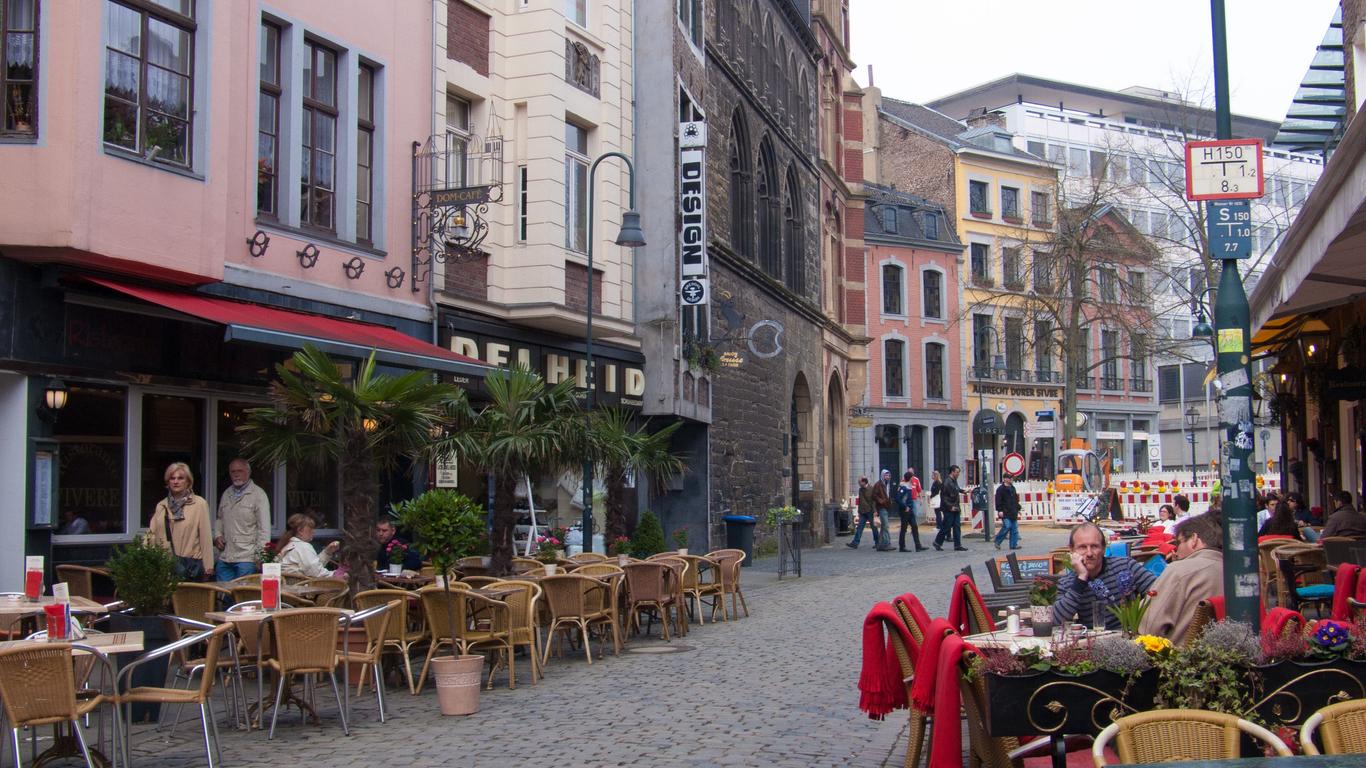Bordering Belgium and the Netherlands, Aachen lies on the banks of the Wurm River as the westernmost city in Germany. It evolved from a Roman spa town to become the Imperial residence of Emperor Charlemagne and was where Holy Roman Emperors were crowned between the 10th and 16th centuries.
Things to do in Aachen
Dominating the city is the Aachen Cathedral, which was constructed under the rule of Emperor Charlemagne, who was buried here in 814 AD. Its religious treasures include the 13th-century Shrine of St. Mary, the golden Pala d’Oro and the Throne of Charlemagne. Don’t miss a visit to the Aachen Cathedral Treasury, where you’ll find the Cross of Lothair and a marble sarcophagus dating from the 3rd century AD.
A short stroll from the Aachen Cathedral is the Aachen Town Hall, an imposing Gothic landmark that was originally constructed in the 14th century. It houses replicas of the Imperial Regalia from Hofburg Palace’s Imperial Treasury. While exploring the building, take note of the 19th-century frescoes by Alfred Rethel and learn about Aachen’s World War II experience in the Master Craftsmen’s Kitchen.
Art dating from the medieval to modern periods is exhibited at the Suermondt-Ludwig-Museum, including works by Otto Dix, Max Beckmann and Aelbrecht Bouts. Based on the collection of Peter and Irene Ludwig is the Ludwig Forum for International Art, which focuses on 20th-century art and includes work by not only German but also Soviet and Chinese artists.
Getting around Aachen
Aachen is around one hour’s drive from Cologne and Cologne Bonn Airport, which has flights to destinations across Europe and North Africa. The smaller Maastricht Aachen Airport is just 30 minutes away. Trains connect from several German cities to the Aachen railway station and buses travel throughout the city.





